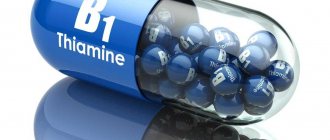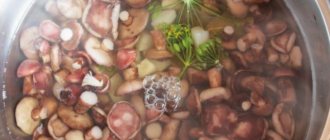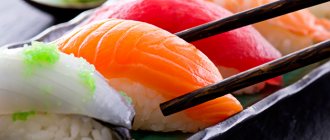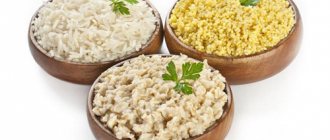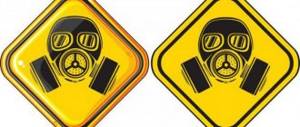Mycotoxins are natural contaminants of cereal grains, legumes, sunflower seeds, as well as vegetables and fruits. They can form during storage.
Mycotoxins have a huge impact on public health and the quality of agricultural products. Mycotoxins cause immunosuppression in animals if present in feed. The animal's immunity is weakened and this leads to various infectious diseases. There is a refusal of food, a decrease in productivity, damage to internal organs, ulcerative stomatitis, hypermal necrosis.
Mycotoxins do not taste bitter, do not smell, and without special techniques it is impossible to determine their presence. The most dangerous and widespread toxigenic species of fungi belong to the genera Aspergillus, Penicillium, and Fusarium.
It is necessary to constantly prevent and control the contamination of grain with toxin-producing fungi!
The main grain pathogens are mycotoxin producers
| Genus of mushrooms | Mycotoxins produced | Mechanism of action |
| Aspergillus | Aflatoxins Ochratoxin A Sterigmatocystin Cyclopiazonic acid | Hepatocarcinogenic (liver damage), nephrotoxic (kidney damage), teratogenic (fetal deformity) and mutagenic effects |
| Penicillium | Ochratoxin Acitrinin Patulin | |
| Fusarium | Group A trichothecenes: T-2 and NT-2 toxins, diacetoxyscirpenol Group B trichothecenes: nivalenol, deoxynivalenol, zearalenone, fumonisins (B1, B2, B3, B4), moniliformin | Immunosuppressive, nephrotoxic and carcinogenic effects |
Standardization of mycotoxins in feed and food products
Aflatoxins
- Aflatoxin B1 (<0.01÷0.5 mg/kg; in grain and grain products 0.005 mg/kg) grain of wheat, barley, oats, corn, soybeans, complete feed for pigs, poultry, concentrate feed for pigs, cattle, sheep, fur-bearing animals, rabbits, nutria, soybean meal and cake, peanut and cottonseed meal
- Aflatoxin M1 (MPC 0.0005 mg/kg) in milk and dairy products In feed intended for farm animals, aflatoxins are also found quite often and in significant quantities. In many countries, this is also associated with the detection of aflatoxins in products of animal origin. For example, aflatoxin M was found in the milk and tissues of farm animals that received feed contaminated with mycotoxins. Moreover, aflatoxin M was found in both whole and dry milk, and even in dairy products that have undergone technological processing (pasteurization, sterilization, preparation of cottage cheese , yogurt, cheeses, etc.).
One of the important evidence of the real danger of aflatoxins for human health was the establishment of a correlation between the frequency and level of food contamination with aflatoxins and the incidence of primary liver cancer among the population.
Ochratoxin A (<0.01÷0.5 mg/kg)
- barley grain, complete feed for pigs, poultry, concentrate feed for cattle
Ochratoxin producers are microscopic fungi of the genus Aspergillus and Penicillium. The main producers are A. ochraceus and P. Viridicatum.
Sterigmatocystin (0.025÷0.03 mg/kg)
- complete feed for pigs, malt sprouts, beet pulp, fruit pulp
Ochratoxins
Ochratoxins are produced by some species of Aspergillus
and
Penicillium
.
The main producers are A.ochraceus
and
P.viridicatum
.
These mushrooms are found everywhere. Aspergillus
produces ochratoxins at elevated temperatures and humidity, and
Penicillium
already at 5ºC. Ochratoxins are highly toxic compounds with a pronounced teratogenic effect.
Ochratoxins A, B, and C are a group of structurally similar compounds that are isocoumarins associated with L
-phenylalanine peptide bond. Depending on the nature of the radicals, various types of ochratoxins are formed (Table 2.3.).
Ochratoxin A is a colorless crystalline substance, slightly soluble in water, moderately soluble in polar organic solvents (methanol, chloroform), as well as in an aqueous solution of sodium carbonate. In its chemically pure form it is unstable and very sensitive to light and air, but in ethanol solution it can remain unchanged for a long time. In UV light it has green fluorescence.
Ochratoxin B is a crystalline substance, an analogue of ochratoxin A, which does not contain a chlorine atom. It is approximately 50 times less toxic than ochratoxin A. It fluoresces blue in UV light.
Ochratoxin C is an amorphous substance, the ethyl ester of ochratoxin A, close to it in toxicity, but has not been found as a natural contaminant of food and feed. In U-light it has a pale green fluorescence.
Ochratoxins belong to toxic mycotoxins, have high toxicity to the liver, kidneys, teratogenic and immunosuppressive properties, and a pronounced hemolytic effect. Of the ochratoxins, the most toxic is ochratoxin A (LD50 = 3.4 mg/kg, (one-day-old chicks, orally)). It is more toxic than aflatoxins. Other mycotoxins in this group are an order of magnitude less toxic.
The biochemical, molecular, and cellular mechanisms of action of ochratoxins have not been sufficiently studied. It is known that ochratoxin A suppresses protein synthesis and carbohydrate metabolism, in particular glyconogenesis, by inhibiting the activity of phenylalanine - t-RNA - a specific enzyme that plays a key role in the initial stage of protein synthesis.
Ochratoxin A is found in corn, barley, wheat, oats, and barley. An important and dangerous fact is that when feed grains and feed are highly contaminated, ochratoxin A is found in livestock products (ham, bacon, sausages). Ochratoxin B is rare. Ochratoxins also affect all fruits of horticultural crops. Apples are especially severely affected: up to 50% of the crop can be contaminated with mycotoxins.
It should be noted that ochratoxins are stable compounds. For example, with prolonged heating of wheat contaminated with ochratoxin A, its content decreased by only 32% (at a temperature of 250–300ºC). Thus, the prevalence in food, toxicity and persistence of ochratoxins pose a real danger to human health.
Analysis methods
Ochratoxin A is found in oxidized foods. It is easily soluble in many organic solvents that are used for extraction. The most commonly used is extraction with chloroform and an aqueous solution of phosphoric acid, followed by column purification and quantification using the TLC method.
An HPLC method has also been developed. Before HPLC analysis, the sample is prepared as follows. The crushed sample is treated with a mixture of 2 M hydrochloric acid and 0.4 M magnesium chloride solution. After homogenization, extract with toluene for 60 minutes. The mixture is centrifuged. The centrifugate is passed through a silica gel column and washed with a mixture of toluene and acetone (mobile phase). Ochratoxin A is eluted with a mixture of toluene and acetic acid (9:1) and dried at 40°C. The residue is dissolved and filtered. The analysis is carried out using HPLC.
In addition, a number of bioassays have been developed on shrimp and bacteria, but the results obtained did not allow the use of these methods for the determination of ochratoxins.
Rationing in feed
Patulin (<0.025÷0.5 mg/kg; in apple products no more than 0.05 mg/kg)
- complete feed for pigs, poultry, concentrate feed for pigs, cattle, sheep, fur-bearing animals, rabbits, nutria, horses, malt sprouts, beet pulp, fruit pulp
Ochratoxin A(<0.01÷0.5 mg/kg)
- barley grain, complete feed for pigs, poultry, concentrate feed for cattle
If a toxicological analysis does not reveal mycotoxins in a grain sample, one cannot be sure of its “purity” in the case where a mycological analysis shows the presence of fusarosis.
Mycotoxin interactions can be complementary, synergistic, or antagonistic. More often, grain is contaminated with various metabolites and their combination can lead to an increase in the overall toxic effect.
During storage, storage molds - Penicillum and Aspergillum - begin to develop on grain infected with Fusarium fungi. In nature they are non-competitive, but become so in conditions of high humidity during storage. Aspergillus and penicillium produce aflatoxins and ochrotoxins, which are also extremely dangerous.
However, there is no correlation between the percentage of affected grains and the amount of mycotoxins. Thus, in grain with 15% contamination, mycotoxins may be completely absent, but in grain with 2% contamination, on the contrary, the concentration of mycotoxins may exceed the permissible level. This is explained by the fact that the concentration of mycotoxins depends on the damage to the grain - with different degrees of damage, the contribution of biomass to the amount of mycotoxins produced is different.
In recent years, molecular genetic methods have been actively used to determine the content of mycotoxins . A grain sample is made into flour and DNA is extracted from it. This sample of common DNA contains DNA from plants, viruses, bacteria, and fungi that are present there. Modern methods can determine how much of a target's DNA is present in that total DNA sample. In this way, the effectiveness of fungicides can be determined .
The main way to solve the problem of quality of grain products is to reduce the initial contamination of raw materials. To do this, it is necessary to combine resistant varieties with high-quality treatment of the ear with effective fungicides using reasonable agricultural technology. Product storage conditions from field to use and careful quality control must be observed.
Recommendations for controlling mycotoxins from sowing to harvesting and storage
Before sowing
- Select the right fungicide for seed treatment: Numerous studies confirm the possibility of endogenous transmission of Fusarium graminearum infection from infected seeds to the ear, which leads to the manifestation of Fusarium head blight and the accumulation of mycotoxins in the grain of the new crop. Treatment of seeds with fungicides containing fludioxonil (CELEST TOP, CELEST MAX, MAXIM PLUS, MAXIM FORTE) blocks the growth of infection at an early stage and prevents further development of the pathogen and its movement throughout the plant from seeds to ears. The fungicidal component also affects the percentage of deoxynivalenol (DON) in the crop, a mycotoxin produced by the causative agent of fusarium in wheat. Studies show that the level of mycotoxins (in particular DON) in grain from areas sown with fludioxonil-treated seeds is significantly lower (up to 20%) than in others where the seed was not treated. Under conditions of an isolated environment, DON is completely absent in the harvest obtained from a protected area.
During the growing season
- Use fungicides during the growing season : The greatest effect of protection against fusarium head blight for cereals is achieved in treatments when 30–50% of the crop is in the early heading phase . Use the recommended dosages of ALTO TURBO, ALTO SUPER and AMISTAR TRIO fungicides.
While cleaning
- Harvest when the humidity is low and the grain is fully ripe. Preliminarily assess the mycotoxin content in the crop. Delaying the harvest of infected crops and increased humidity at the time of harvest can increase the content of mycotoxins!
During storage
- Separate grain into food/feed.
- Place different categories of grain into separate piles, clean and dry separately. At high humidity, harvesting must be done by direct combining. Storing grain with a high moisture content leads to the development of fungal infection (Fusarium + Aspergillus + Penicillium) and the accumulation of mycotoxins!
- Monitor the quality of grain upon receipt into storage.
- Prevent external contamination of stored grain and cross-contamination between separately stored lots.
- Maintain optimal storage parameters! The most important indicator is grain moisture.
- Perform stock pest control.
Mycotoxins
Mycotoxins are a general term for metabolites produced by molds on food products that pose a threat to human and animal health. Aflatoxins are the most dangerous group, classified as carcinogens by WHO and subject to strict regulation in many countries around the world. Express monitoring of mycotoxin content in food products is the most important task for ensuring food safety.
In Russia and the countries of the Customs Union, the maximum permissible levels of mycotoxins in grain and food products are defined in the Technical Regulations of the Customs Union TRTS 015-2011, TRTS 021-2011 and SanPiN 2.3.2.1078-01. According to SanPiN, the content of aflatoxin B1, deoxynivalenol (vomitoxin), ochratoxin A, zearalenone, T-2 toxin is controlled in agricultural products, patulin in fruits and vegetables, and aflatoxin M1 in dairy products. Additionally, when controlling grain and grain products, TRTS 015-2011 regulates the content of fumonisin and the amount of aflatoxins B1, B2, G1, G2. The priority pollutants are: for grain products - deoxynivalenol; for nuts and oilseeds - aflatoxin B1; for processed fruits and vegetables - patulin. The content of ochratoxin A is controlled in food grains and flour and cereal products. The presence of mycotoxins in baby and diet food products is not allowed.
European legislation on mycotoxins in food and feed consists of two main provisions: Commission Regulation (EC) No 1881/2006 setting maximum levels for certain contaminants in food, and most recently Commission Regulation (EU) No 1058 /2012 dated 12 November 2012, amending No. 1881/2006 and setting maximum residue limits for aflatoxins, ofratoxin A, patulin, deoxynivalenol, zearelenone, fumonisin, T2 and HT2 toxins in various products. Mycotoxins are not destroyed by heat treatment and are largely unaffected by cooking, freezing or digestion. These properties make the study and quantification of mycotoxins in food very important. Shimadzu introduces a new chromatography system for mycotoxin screening.
Modern methods for detecting and determining the content of mycotoxins in food and feed are numerous and varied, ranging from simple and rapid screening methods to expensive highly sensitive chromatography-mass spectrometric analysis methods. Methods for determining individual species using liquid chromatography are often used, but so far there is no way to record all regulated mycotoxins from one sample.
Standardized instrumental methods for determining mycotoxins are liquid chromatography and liquid chromatography-mass spectrometry. Main GOST standards for the analysis of mycotoxins:
LC-MS:
mycotoxins:
- GOST 34140-2017 “Food products, feed, food raw materials. Method for determination of mycotoxins using high-performance liquid chromatography with mass spectrometric detection"
- GOST 32835-2014 “Juice products. Determination of mycotoxins by tandem high-performance liquid chromatography-mass spectrometry (HPLC-MS/MS)"
Liquid chromatography-mass spectrometers




